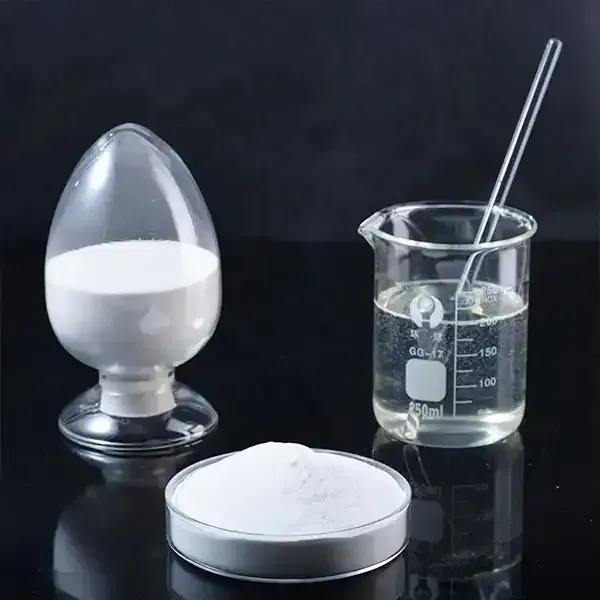The Versatility and Applications of Hydroxyethyl Cellulose
Hydroxyethyl cellulose (HEC) is a non-ionic, water-soluble polymer derived from cellulose, a naturally occurring biopolymer found in the cell walls of plants. HEC is synthesized through the etherification of cellulose, a process that introduces hydroxyethyl groups into the cellulose structure. The resulting product possesses unique physicochemical properties, making it valuable in a wide range of industries including pharmaceuticals, cosmetics, food, and construction. This article explores the properties, synthesis, and applications of hydroxyethyl cellulose, highlighting its importance and versatility.
Properties of Hydroxyethyl Cellulose
HEC exhibits several key properties that contribute to its wide applicability. Firstly, it is a non-ionic polymer which means it is not affected by the presence of electrolytes in solution, allowing it to maintain stability in various environments. HEC is highly soluble in water, forming a clear, viscous solution, which can be tailored by adjusting the molecular weight and degree of substitution. Its viscosity is temperature-dependent, displaying pseudoplastic behavior—that is, it becomes less viscous when subjected to shear stress. This shear-thinning property makes HEC ideal for applications that require smooth and easy application, such as in coatings and gels.
Moreover, HEC is biodegradable and demonstrates low toxicity, making it an environmentally friendly additive compared to synthetic polymers. These characteristics, combined with its excellent film-forming ability and thickening properties, enable HEC to be a crucial ingredient in many products.
Synthesis of Hydroxyethyl Cellulose
The production of hydroxyethyl cellulose involves the reaction of cellulose with ethylene oxide in an alkaline medium. The extent of etherification, which alters the number of hydroxyethyl groups added to the cellulose chain, can be controlled to modify properties such as solubility and viscosity. Generally, the higher the degree of substitution, the lower the gelation temperature and the higher the solubility in water. The synthesis process requires careful control of reaction conditions to achieve desirable properties while ensuring a consistent product quality.
Applications of Hydroxyethyl Cellulose
hydroxyethyl cellulose

HEC's unique properties lend themselves to a multitude of applications across various sectors.
1. Pharmaceuticals In the pharmaceutical industry, HEC is utilized as a thickening agent, emulsifier, and stabilizer in topical formulations, ointments, and gels. Its ability to form a gel-like structure enables effective drug delivery, enhancing the release profile of active pharmaceutical ingredients. Additionally, HEC is employed in controlled-release formulations due to its biocompatibility and adaptability.
2. Cosmetics and Personal Care HEC is widely used in cosmetics and personal care products, including shampoos, conditioners, lotions, and creams. It acts as a thickener and stabilizer, improving the texture and consistency of formulations. Furthermore, it provides a pleasant feel and improves the spreadability of products when applied to the skin.
3. Food Industry In the food sector, HEC is utilized as a thickening and stabilizing agent in sauces, dressings, and emulsified products. Its ability to create a desirable texture and improve mouthfeel makes it a preferred choice for manufacturers aiming to enhance the sensory properties of food products.
4. Construction HEC serves as a crucial additive in the construction industry, particularly in the formulation of cementitious materials and tile adhesives. It enhances workability, provides water retention, and improves adhesion, which is essential for achieving high-performance construction materials.
5. Oil and Gas Industry In oil drilling, HEC is used as a viscosifying agent in drilling fluids to maintain the stability of boreholes and enhance the efficiency of drilling operations.
Conclusion
Hydroxyethyl cellulose is a versatile and valuable polymer that transcends various fields, providing unique functionalities that enhance product performance. Its non-toxic and biodegradable nature makes it a sustainable choice in an era where environmental concerns are paramount. As research continues to explore the potential of HEC, its applications are likely to expand even further, positioning it as an essential ingredient in both traditional and innovative formulations across different industries.
-
The Application and Significance of Construction RdpNewsMay.19,2025
-
Industrial Grade HpmcNewsMay.19,2025
-
Building Coating Adhesive Building Coating Adhesive HpmcNewsMay.19,2025
-
Application Of Hpmc For Detergent For Detergent In DetergentsNewsMay.19,2025
-
Application Of Hpmc Cellulose In Cement-Based MaterialsNewsMay.19,2025
-
Application Of High Quality Hpmc For Construction In The Field Of ConstructionNewsMay.19,2025




